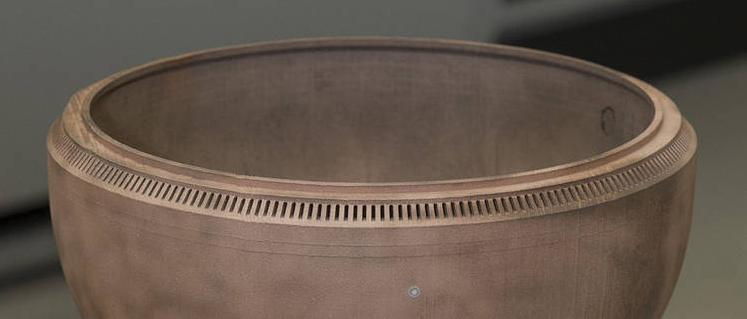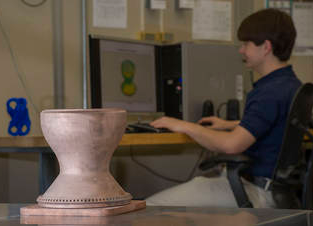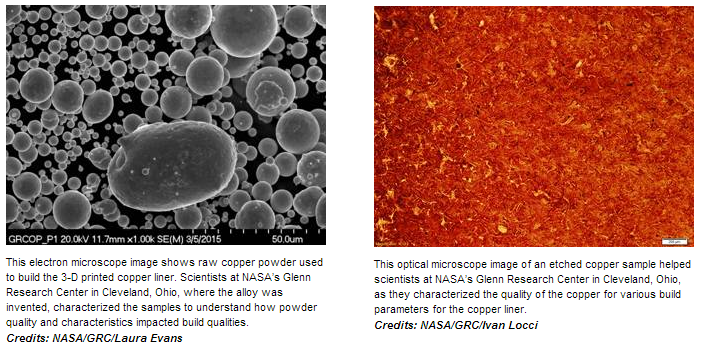 Day in and day out, we see new types of technologies emerge from the 3D printing space, as well as different uses which test the feasibility and potential that 3D printing has within the fields of manufacturing. One organization which is really beginning to embrace 3D printing, is NASA. Whether it is 3D printing rocket parts or sending 3D printers to the International Space Station, NASA gets it — 3D printing is the future of manufacturing. It’s easy to argue this point when someone off of the street comes up to you and says that 3D printing will revolutionize the world, but when some of the most brilliant minds in the world prove it in a scientific lab, that’s when we should all start to take note.
Day in and day out, we see new types of technologies emerge from the 3D printing space, as well as different uses which test the feasibility and potential that 3D printing has within the fields of manufacturing. One organization which is really beginning to embrace 3D printing, is NASA. Whether it is 3D printing rocket parts or sending 3D printers to the International Space Station, NASA gets it — 3D printing is the future of manufacturing. It’s easy to argue this point when someone off of the street comes up to you and says that 3D printing will revolutionize the world, but when some of the most brilliant minds in the world prove it in a scientific lab, that’s when we should all start to take note.
NASA’s latest innovation with 3D printing comes with their recent breakthrough; 3D printing full-scaled copper rocket engine parts. In trying to save both time and money, the organization has begun using selective laser melting 3D printers to create a combustion chamber liner that is able to function at extremely high and low temperatures.
“Building the first full-scale, copper rocket part with additive manufacturing is a milestone for aerospace 3D printing,” explained Steve Jurczyk, associate administrator for the Space Technology Mission Directorate at NASA Headquarters. “Additive manufacturing is one of many technologies we are embracing to help us continue our journey to Mars and even sustain explorers living on the Red Planet.”
When rockets are sent into space, there are many engineering feats and chemical processes that must take place in order for everything to go as planned. One example is the mixture of extremely cold propellants which are then heated to extreme temperatures on the other end of the spectrum. Copper is one material which can hold up to these harsh, changing conditions, thus the ability to 3D print in this metal could open doors not only for NASA but for manufacturing firms around the world as well. In fact, NASA is releasing the data on the process via their Materials and Processing Information System (MAPTIS), for other American manufacturing companies to utilize.
“On the inside of the paper-edge-thin copper liner wall, temperatures soar to over 5,000 degrees Fahrenheit, and we have to keep it from melting by recirculating gases cooled to less than 100 degrees above absolute zero on the other side of the wall,” stated Chris Singer, director of the Engineering Directorate at NASA’s Marshall Space Flight Center in Huntsville, Alabama. “To circulate the gas, the combustion chamber liner has more than 200 intricate channels built between the inner and outer liner wall. Making these tiny passages with complex internal geometries challenged our additive manufacturing team.”
The combustion chamber liner is 3D printed using a material called GRCo-84, which is a copper alloy developed at NASA’s own Glenn Research Center in Ohio. The liner is printed using an astonishing 8,255 separate layers of this copper powder, which is sintered together one layer at a time to build up the final product. In all, it takes 10 full days and 18 hours to complete the printing process of this single part.
“Copper is extremely good at conducting heat,” explained Zach Jones, the materials engineer who led the manufacturing at Marshall. “That’s why copper is an ideal material for lining an engine combustion chamber and for other parts as well, but this property makes the additive manufacturing of copper challenging because the laser has difficulty continuously melting the copper powder.”
The ultimate goal is to be able to build rocket engine parts a whole order of magnitude faster than current technology allows. At the same time, they want to reduce costs of production by at least 50%.
As for the copper part itself, it will next be sent off to NASA’s Langley Research Center in Virginia, where it will be coated with a nickel super-alloy, using NASA’s electron beam freedom fabrication facility. Once complete, it will be ready, hopefully sometime this summer, for live hot-fire testing at Marshall, to see if it will actually be able to perform in actual conditions.
What do you think about this incredible breakthrough? Will all rocket engines being sent into space one day soon be 3D printed? Discuss in the NASA 3D Printing Copper Rocket Parts forum thread on 3DPB.com.
[Source: NASA]Subscribe to Our Email Newsletter
Stay up-to-date on all the latest news from the 3D printing industry and receive information and offers from third party vendors.
You May Also Like
Precision at the Microscale: UK Researchers Advance Medical Devices with BMF’s 3D Printing Tech
University of Nottingham researchers are using Boston Micro Fabrication‘s (BMF) 3D printing technology to develop medical devices that improve compatibility with human tissue. Funded by a UK grant, this project...
3D Printing Webinar and Event Roundup: April 21, 2024
It’s another busy week of webinars and events, starting with Hannover Messe in Germany and continuing with Metalcasting Congress, Chinaplas, TechBlick’s Innovation Festival, and more. Stratasys continues its advanced training...
3D Printing Webinar and Event Roundup: March 17, 2024
It’s another busy week of webinars and events, including SALMED 2024 and AM Forum in Berlin. Stratasys continues its in-person training and is offering two webinars, ASTM is holding a...
3D Printed Micro Antenna is 15% Smaller and 6X Lighter
Horizon Microtechnologies has achieved success in creating a high-frequency D-Band horn antenna through micro 3D printing. However, this achievement did not rely solely on 3D printing; it involved a combination...
































